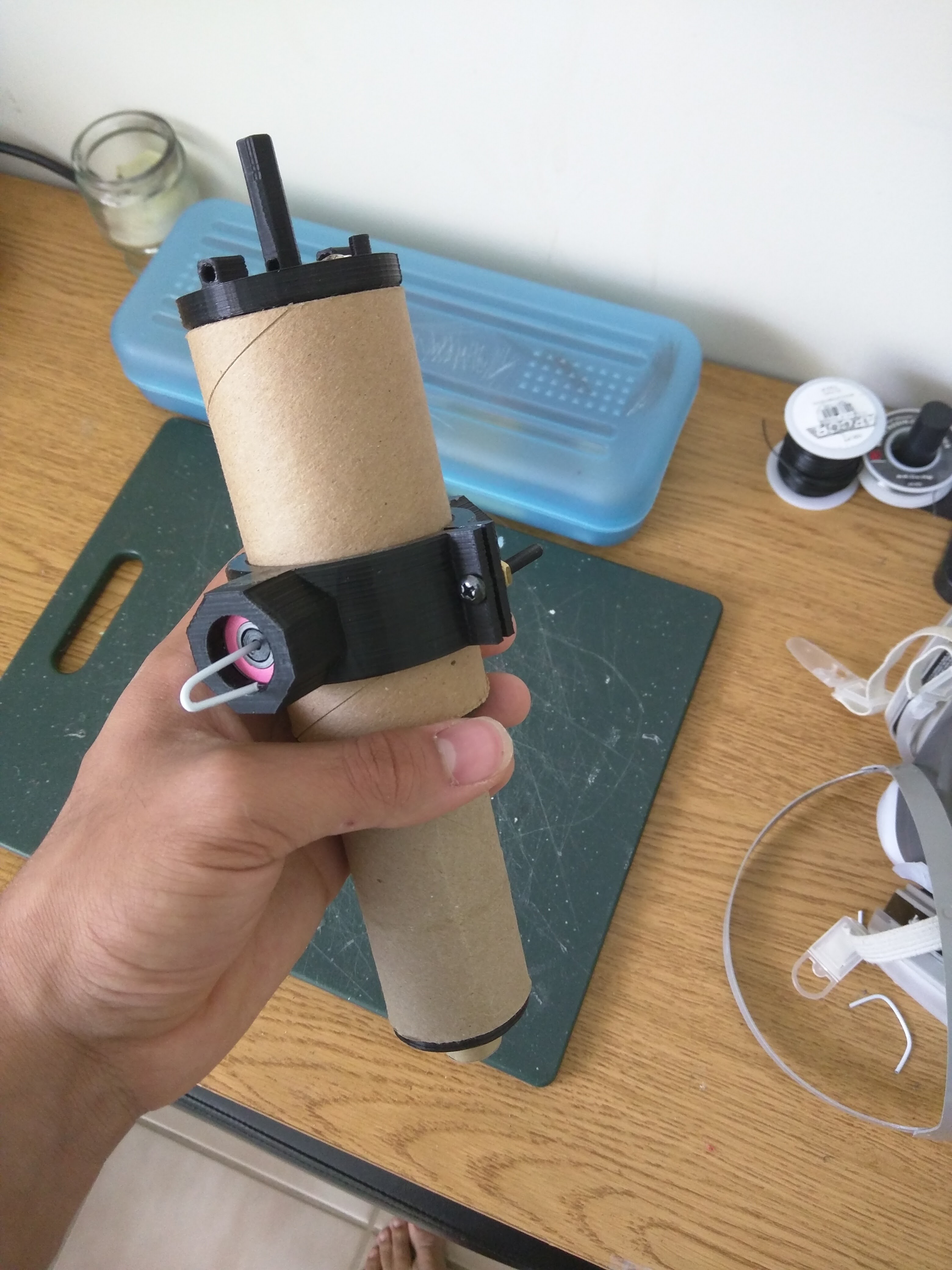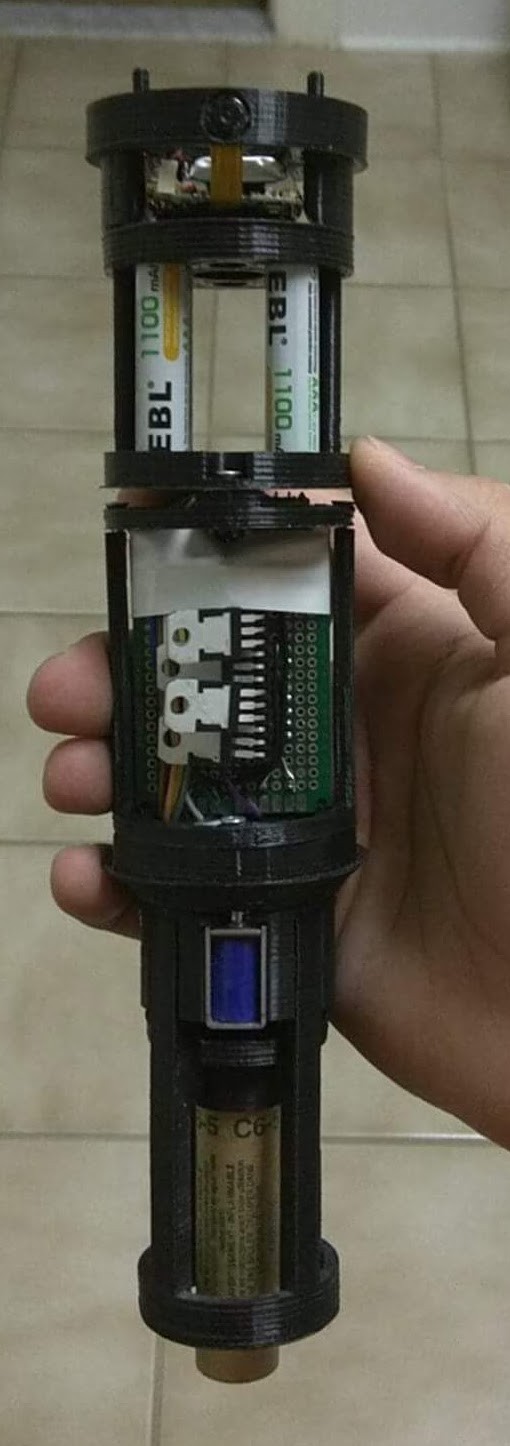After talking to some people, including Arsenio (from Hackaday) Joe (who's working on the Scout rocket), Mike (from Hackaday), and friends Owen, Adam, Erica, and Evie, I've designed a list of tests in increasing difficulty for the gimbal.
1. Pivot point placed about the COM, with a stationary pivot.
2. Pivot point placed about the COM, with extra-long paracord tethers.
3. Finned rocket
4. Finned rockets with gradually decreasing fin size.
Testing in this way should ideally help to isolate the gimbal and its stages of development, as well as reduce the chances of a rapid unscheduled disassembly.
Taking after Arsenio's advice, I designed a harness that can be adjusted to be placed about the rocket's COM. Skateboard bearings can be press fit into each side, and a screw and nut are used to secure it once it's in the best position

I've also taken the liberty to redesign some of the internals, as assembling and disassembling the rocket was sometimes cumbersome. There was also a pretty big problem where the gyro could easily be offset from the gimbal. In this redesign, I also added a camera compartment just for fun. It's not really needed at this stage of development, but its definitely interesting.
Here's the naked rocket in its current form.

I've conducted a second gimbal test, using the stationary pivot about the COM. Here's a clip of that:
Looking at the slo-mo, it seems like the gimbal wobbles during the peak thrust phase, and in doing so, the rocket stays pretty straight. It then goes into a spin that it can't correct.
Arsenio pointed out that it's possible that a spin was induced during the end of the peak thrust, and that the lesser thrust of the engine afterwards wasn't high enough (at the angle used) to correct the induced spin.
I'm currently thinking that are a few ways this specific problem could be fixed:
1. Variable angle (with servos or by varying the voltage that goes to the solenoids)
2. Constant thrust engine (expensive)
3. Launching with a launch rod (The rod would keep the rocket straight through the peak thrust phase)
Another weird thing happened with the code. Why was the engine wobbling at all at that angle? It should've been wobbling when it was straight up and down. Maybe a calibration issue?
After looking at the 3D printed parts closer, it seems that a slight warp meant that the gimbal was not tilting equally in all directions.
Also, a slight irregularity in the ground end of the spring I'm using means that the rest angle of the engine is not perfectly square with the rest of the rocket. At first, I thought this was so subtle to not effect anything, but it might be worth looking in to.
 Julian Costas
Julian Costas
Discussions
Become a Hackaday.io Member
Create an account to leave a comment. Already have an account? Log In.